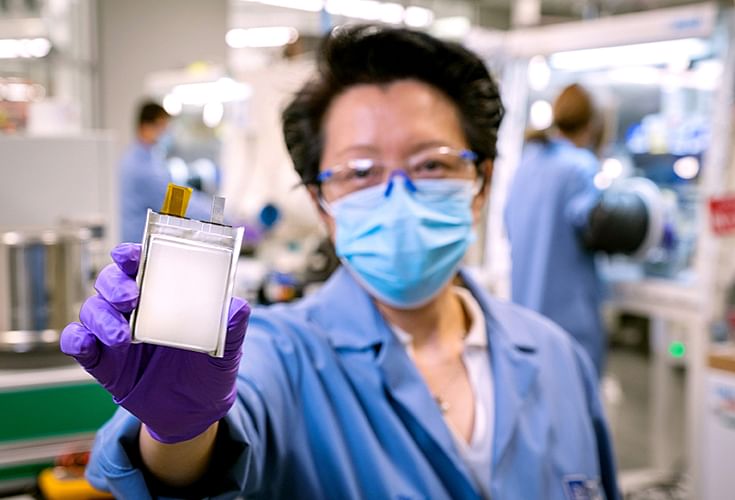GM begins testing lithium metal battery with real-world potential
Initial prototype batteries have already completed 150,000 simulated test miles at R&D labs, demonstrating real-world potential.
General Motors says it is making progress on next-generation Ultium chemistry ahead of new joint development agreement with SolidEnergy Systems.
Yesterday, General Motors President Mark Reuss provided more details about GM’s next-generation Ultium battery chemistry and announced a joint development agreement with lithium metal battery innovator SolidEnergy Systems.
GM’s lithium metal battery with a protected anode will feature a combination of affordability, high performance and energy density. The initial prototype batteries have already completed 150,000 simulated test miles at research and development labs at GM’s Global Technical Center in Warren, Michigan, demonstrating real-world potential.
To accelerate Li-Metal battery commercialisation, GM says it is working with several innovative companies and making investments that will allow the company to scale quickly.
GM Ventures was an early investor six years ago in SES, a research, development and manufacturing leader of Li-Metal technology and AI-powered battery management software to optimise performance and safety. The 2015 investment was the start of a close working relationship between SES and General Motors’ research and development organization.
Today’s joint development agreement is the next progression of that ongoing collaboration. As part of the agreement, GM and SES plan to build a manufacturing prototyping line in Woburn, Massachusetts, for a high-capacity, pre-production battery by 2023.
“Affordability and range are two major barriers to mass EV adoption,” said Reuss. “With this next-generation Ultium chemistry, we believe we’re on the cusp of a once-in-a-generation improvement in energy density and cost. There’s even more room to improve in both categories, and we intend to innovate faster than any other company in this space.”

The expected battery energy density increase could enable higher range in a similarly sized pack or comparable range in a smaller pack. The weight and space savings from smaller battery packs could help with vehicle lightweighting or create more room for additional technology.
Part of the foundation of GM and SES’ collaboration on Li-Metal prototype batteries is GM’s extensive lithium metal battery experience. The company’s expertise in this field has resulted in 49 patents granted and 45 patents pending. SES will also bring its own lithium metal intellectual property to the collaboration.
GM announces this rapid technical progress for possible use in future Ultium-based vehicles just one year after the reveal of the first-generation Ultium Platform. The first Ultium-based products are expected to go on sale later this year.
RELATED ARTICLES
Autoliv Plans JV for Advanced Safety Electronics With China’s HSAE
The new joint venture, which is to be located strategically near Shanghai and close to several existing Autoliv sites in...
JLR to Restart Production Over a Month After September Hacking
Manufacturing operations at the Tata Group-owned British luxury car and SUV manufacturer were shut down following a cybe...
BYD UK Sales Jump 880% in September to 11,271 units
Sales record sets the UK apart as the largest international market for BYD outside of China for the first time. The Seal...






 By Autocar Professional Bureau
By Autocar Professional Bureau
 12 Mar 2021
12 Mar 2021
 5880 Views
5880 Views










 Ajit Dalvi
Ajit Dalvi




